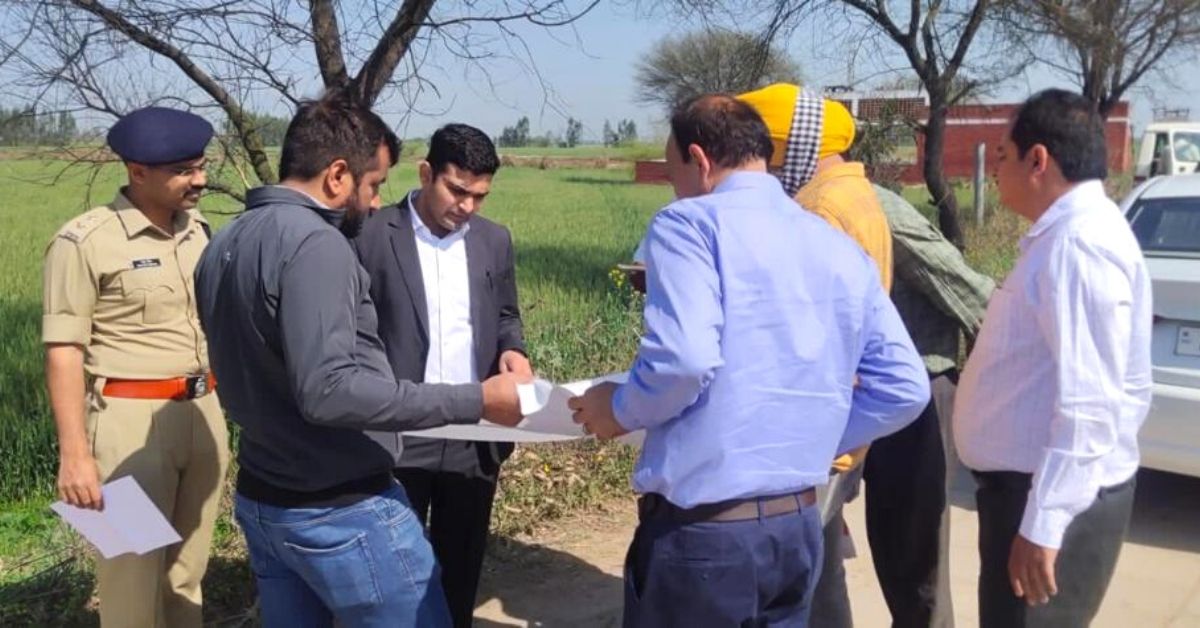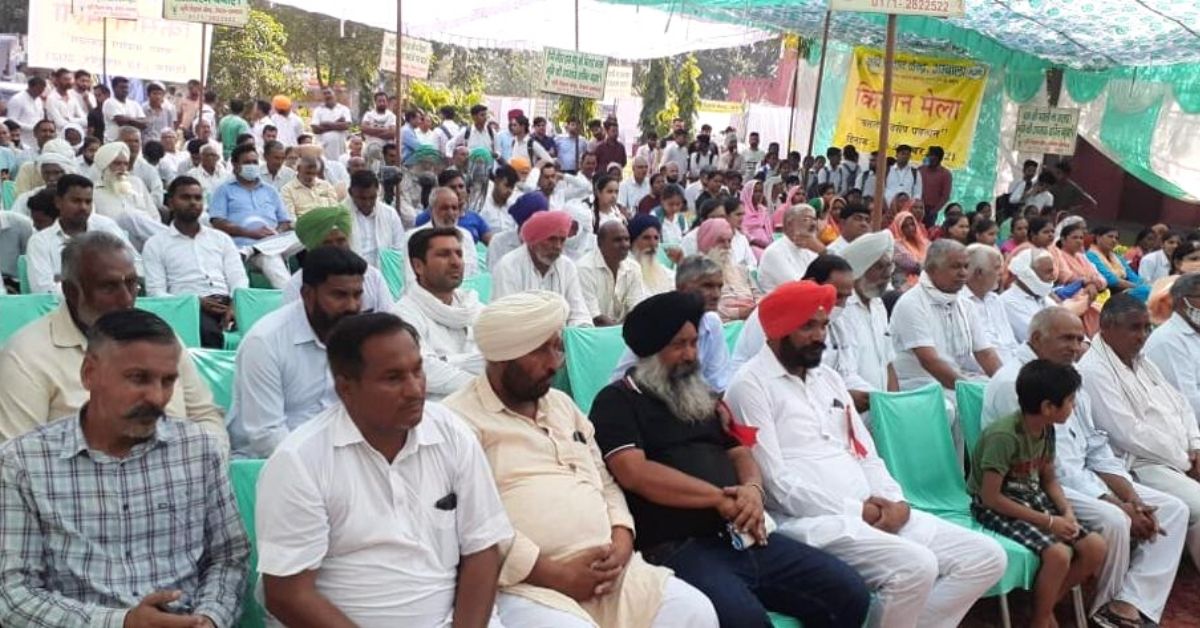How an IAS Officer Reduced District’s Stubble Burning by 80% in Just 1 Year
IAS officer Vikram Yadav, posted in Ambala, Haryana, has helped cut stubble burning in the district by 80%, by helping farmers use alternate methods to remove, or reuse, wheat and paddy stubble

Even as we collectively struggle to rein in stubble burning across North India, satellite data indicates that ‘farm fire incidents’ in 2021 were the highest in Punjab and Haryana in the past five years.
When faced with such stark facts, it may seem like the efforts of so many individuals are having no impact at all. However, the story of an IAS officer from Ambala in Haryana is that perfect example of the folk wisdom that claims – even a sparrow can try to douse a forest fire.
In June 2021, Vikram Yadav joined as a district collector in Ambala and, within months, mobilised government machinery to prevent stubble burning over hundreds of acres of land. His actions led to an 80 per cent reduction in incidents reported, compared to the number of reports from 2020. Most importantly – he achieved this without the use of excessive force.
So how did he achieve that?
Speaking with The Better India, Vikram explains, “Farmers burn the stubble residue from wheat and paddy after the harvest season concludes. This is inevitable for farmers as they need to clear and prepare the ground for planting the crop for the next season, which is Rabi.”
Vikram says stubble burning is the preferred method due to the short gap between the two seasons.
“Burning stubble or agriculture waste is one of the quickest methods as it clears ground overnight. The other methods require at least 20 to 30 days – which delays the sowing process for the Rabi season,” he says.
Vikram added, “Soon after taking charge, I decided to prioritise the issue. Information from the state agriculture department revealed 5,328 cases reported across the state in 2020.”
He decided to address the issue with multiple interventions.
“After studying the data, the causes of incidents and exploring possiblew solutions, I took steps at multiple levels. I realised that it was mandatory to approach the farmers for in-situ and ex-situ waste management,” he says.
“Farmers need solutions to get rid of their stubble, but one size doesn’t fit all. Hence, it was important to offer the best-suited solution to them. We began by analysing the severity of the issues and demarcated areas into red and yellow zones. The red highlighted areas with more than six farm fires in a year, while yellow indicated up to five incidents,” he says, adding, “The exercise narrowed down eight red zones and 89 yellow zones.”
The district administration organised awareness campaigns and training across villages with the help of agriculture officers, deputy district collectors and other officers from various subdivisions.
“Farmer events and rallies were held by school and college students to create awareness of the hazards of stubble burning. Besides, public places such as fuel stations, walls and hoardings were also used to send an effective message to the locals,” he says.
Offering feasible alternatives
Beyond awareness, the officer worked to provide viable solutions to the farmers.
“Our focus was to reduce cases of farm fires in the red zone down to zero. We introduced smart seeder machines, shredders and other equipment with a government subsidy to mitigate farm waste. Other technological solutions such as a straw baler with a rack, a rotary slasher, a hydraulic reversible plough and others that turned the residue into fertiliser, were introduced to the farmers,” he says.
The farmers received the option to hire the equipment from Custom Hiring Centres (CHCs) facilitated by the government or to purchase them outright.
Besides addressing the waste at the source, the IAS officer says, “The farmers were offered other commercial alternatives such as selling stubble to power plants.”
“Some farmers connected with local packaging industries as well. The stubble can also be used in mushroom growing, but the solution did not prove successful,” he claims.
The overall exercise lasted for months and reaped positive results. 702 cases were registered between September 15 and October 30, 2020. The number of cases registered dropped to 146 for the same corresponding time frame in 2021.
“The farmers also chose the options as they received immediate cash payments or money transfers in the waste management process. It became a motivational factor for them,” he says.
“Also, no police cases were registered against the violators, but 41 farmers received fines for burning farm waste,” Vikram says.
Nirmal Singh, a farmer from Dhurala village, says, “I rented and later purchased equipment to convert the stubble into fine organic matter. I also mixed the shredded stubble with the soil, which decomposed after spraying with water. Now my 25-acre land has much softer soil, and I expect it to help increase productivity.”
He also actively participates in awareness programmes to help the administration. “I have realised the damage smoke causes to the local environment and joined the cause. I can say that about 90 per cent of farmers are aware and have taken significant steps to stop stubble burning,” Nirmal adds.
However, Vikram aims to bring the numbers down to zero.
“Meetings and awareness campaigns have already begun for the upcoming season. More solutions and industrial collaborations are under the anvil, to offer more profitable options for farmers to manage farm waste. Some of which are tie-ups with CNG plants or industrial energy pipelines,” he says in closing.
“I hope the success of the initiative remains consistent in coming years, and it serves as a model for other farmers to prevent stubble burning,” he adds.
Edited by Vinayak Hegde
This story made me
- 97
- 121
- 89
- 167
Tell Us More
We bring stories straight from the heart of India, to inspire millions and create a wave of impact. Our positive movement is growing bigger everyday, and we would love for you to join it.
Please contribute whatever you can, every little penny helps our team in bringing you more stories that support dreams and spread hope.



















